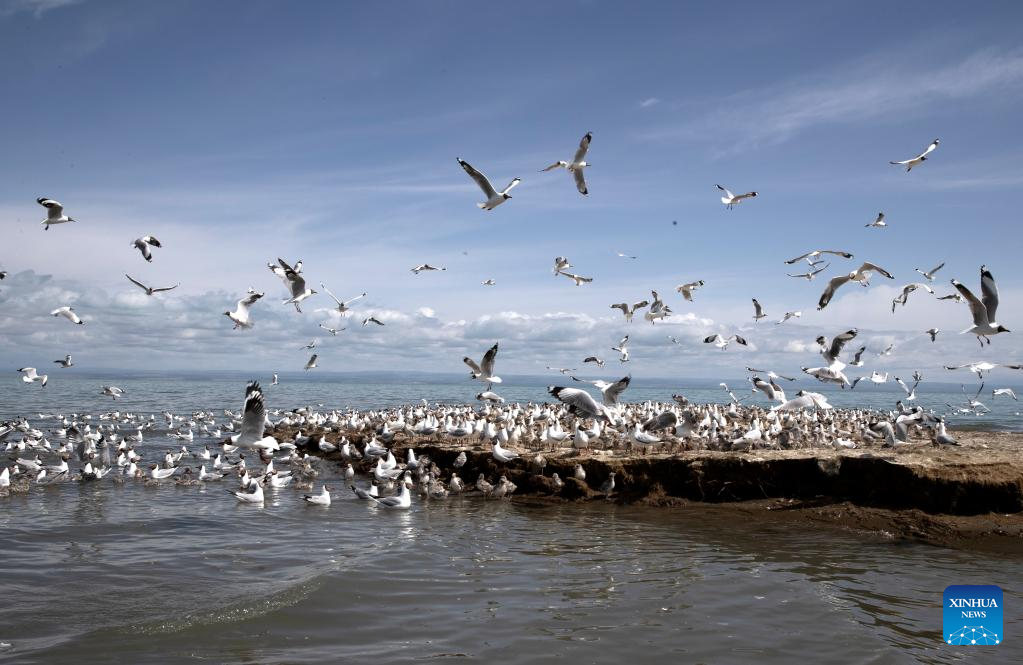
This photo taken on July 1, 2021 shows waterfowls at the Bird Island wetland at Qinghai Lake in northwest China's Qinghai Province. Qinghai Lake, located in northwest China's Qinghai Province, is China's largest inland saltwater lake. It is a major transit point for migratory birds from Central Asia to India and East Asia to Australia. It also serves as an important winter home for waterbirds on the Qinghai-Tibet Plateau.
Qinghai Lake is a crucial body of water to maintain ecological security in the northeastern Qinghai-Tibet Plateau. It is also a natural barrier for controlling the eastward spread of desertification. The improving ecosystem of the lake in recent years has benefited a variety of plant and animal species. (Photo by Xing Zhi/Xinhua)

This photo taken on June 2, 2020 shows bar-headed geese at the Bird Island wetland at Qinghai Lake in northwest China's Qinghai Province. Qinghai Lake, located in northwest China's Qinghai Province, is China's largest inland saltwater lake. It is a major transit point for migratory birds from Central Asia to India and East Asia to Australia. It also serves as an important winter home for waterbirds on the Qinghai-Tibet Plateau.
Qinghai Lake is a crucial body of water to maintain ecological security in the northeastern Qinghai-Tibet Plateau. It is also a natural barrier for controlling the eastward spread of desertification. The improving ecosystem of the lake in recent years has benefited a variety of plant and animal species. (Photo by Xing Zhi/Xinhua)
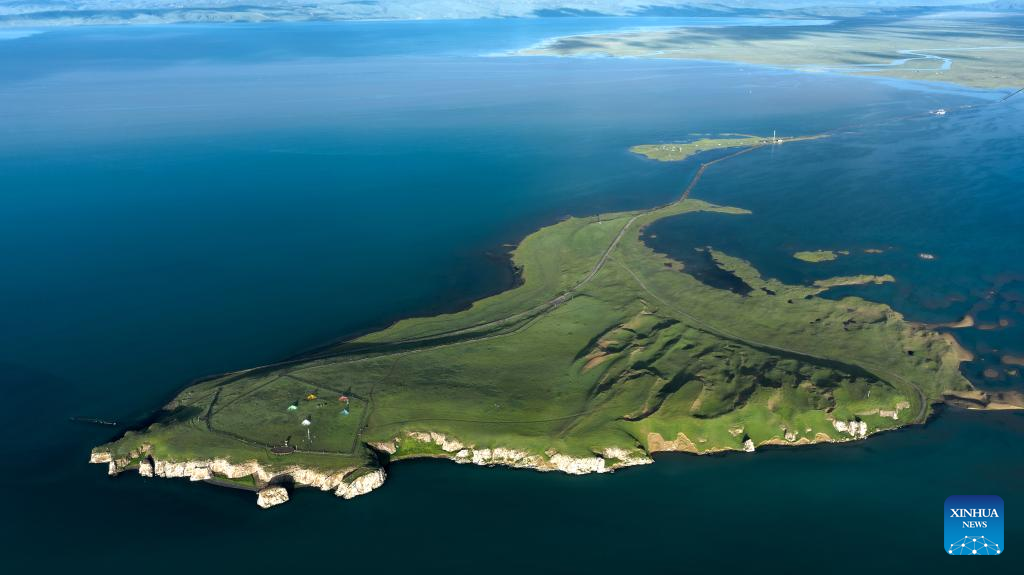
This aerial photo taken on July 17, 2020 shows a view of the Bird Island wetland at Qinghai Lake in northwest China's Qinghai Province. Qinghai Lake, located in northwest China's Qinghai Province, is China's largest inland saltwater lake. It is a major transit point for migratory birds from Central Asia to India and East Asia to Australia. It also serves as an important winter home for waterbirds on the Qinghai-Tibet Plateau.
Qinghai Lake is a crucial body of water to maintain ecological security in the northeastern Qinghai-Tibet Plateau. It is also a natural barrier for controlling the eastward spread of desertification. The improving ecosystem of the lake in recent years has benefited a variety of plant and animal species. (Photo by Yang Tao/Xinhua)

This photo taken on April 8, 2020 shows a brown-headed gull resting at Qinghai Lake, Gangcha County of Haibei Tibetan Autonomous Prefecture, northwest China's Qinghai Province.
Qinghai Lake, located in northwest China's Qinghai Province, is China's largest inland saltwater lake. It is a major transit point for migratory birds from Central Asia to India and East Asia to Australia. It also serves as an important winter home for waterbirds on the Qinghai-Tibet Plateau.
Qinghai Lake is a crucial body of water to maintain ecological security in the northeastern Qinghai-Tibet Plateau. It is also a natural barrier for controlling the eastward spread of desertification. The improving ecosystem of the lake in recent years has benefited a variety of plant and animal species. (Xinhua/Zhang Long)
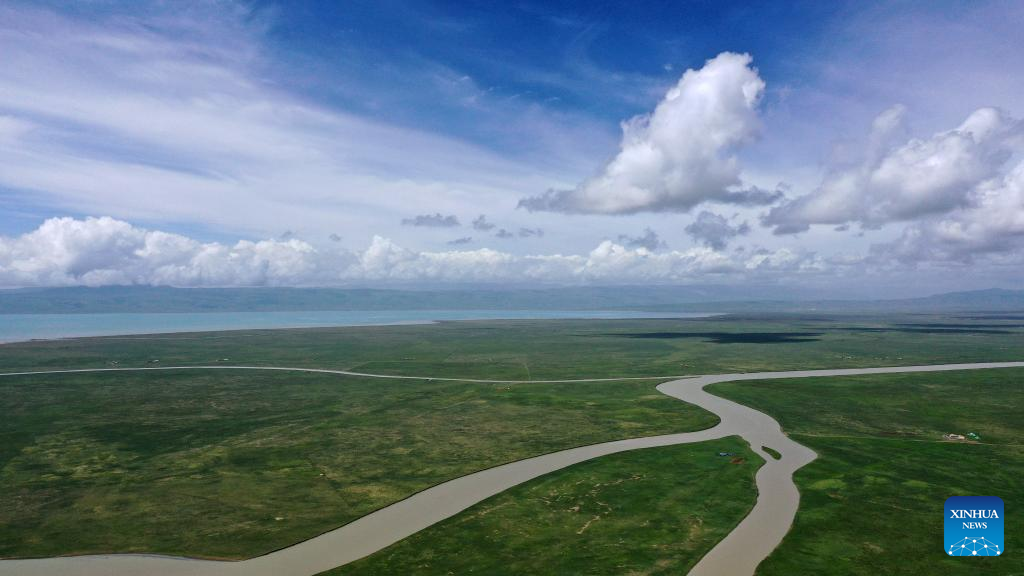
This aerial photo taken on July 10, 2020 shows a view of Buh River wetland at Qinghai Lake in northwest China's Qinghai Province.
Qinghai Lake, located in northwest China's Qinghai Province, is China's largest inland saltwater lake. It is a major transit point for migratory birds from Central Asia to India and East Asia to Australia. It also serves as an important winter home for waterbirds on the Qinghai-Tibet Plateau.
Qinghai Lake is a crucial body of water to maintain ecological security in the northeastern Qinghai-Tibet Plateau. It is also a natural barrier for controlling the eastward spread of desertification. The improving ecosystem of the lake in recent years has benefited a variety of plant and animal species. (Xinhua/Zhang Hongxiang)
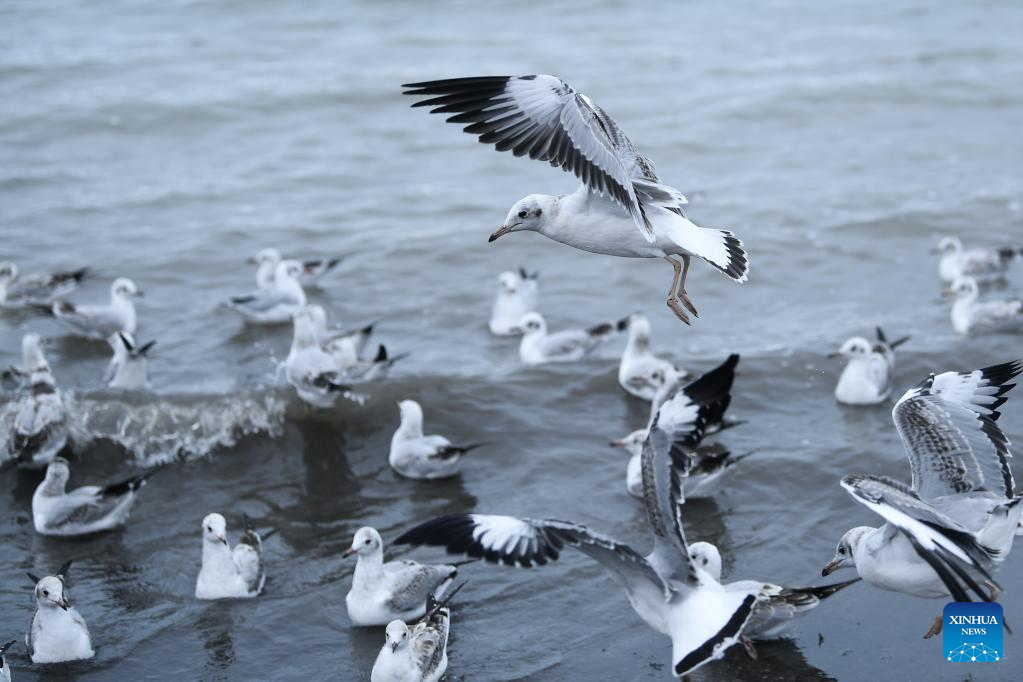
This photo taken on Sept. 15, 2021 shows waterfowls at the lakeside of Qinghai Lake in northwest China's Qinghai Province.
Qinghai Lake, located in northwest China's Qinghai Province, is China's largest inland saltwater lake. It is a major transit point for migratory birds from Central Asia to India and East Asia to Australia. It also serves as an important winter home for waterbirds on the Qinghai-Tibet Plateau.
Qinghai Lake is a crucial body of water to maintain ecological security in the northeastern Qinghai-Tibet Plateau. It is also a natural barrier for controlling the eastward spread of desertification. The improving ecosystem of the lake in recent years has benefited a variety of plant and animal species. (Xinhua/Zhang Long)
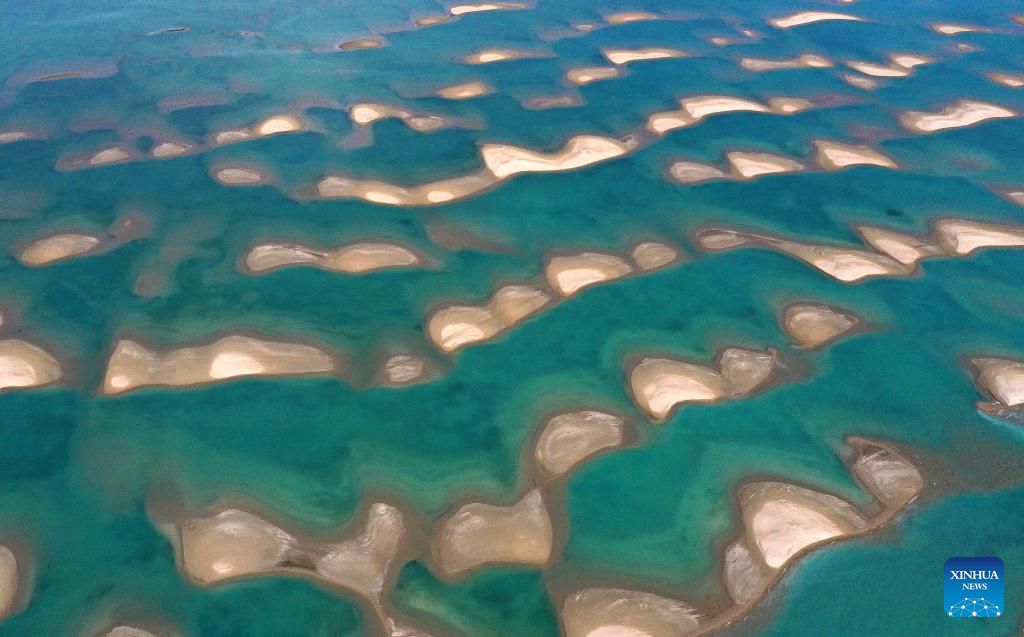
This aerial photo taken on July 10, 2020 shows a view of the Bird Island wetland at Qinghai Lake in northwest China's Qinghai Province.
Qinghai Lake, located in northwest China's Qinghai Province, is China's largest inland saltwater lake. It is a major transit point for migratory birds from Central Asia to India and East Asia to Australia. It also serves as an important winter home for waterbirds on the Qinghai-Tibet Plateau.
Qinghai Lake is a crucial body of water to maintain ecological security in the northeastern Qinghai-Tibet Plateau. It is also a natural barrier for controlling the eastward spread of desertification. The improving ecosystem of the lake in recent years has benefited a variety of plant and animal species. (Xinhua/Zhang Hongxiang)
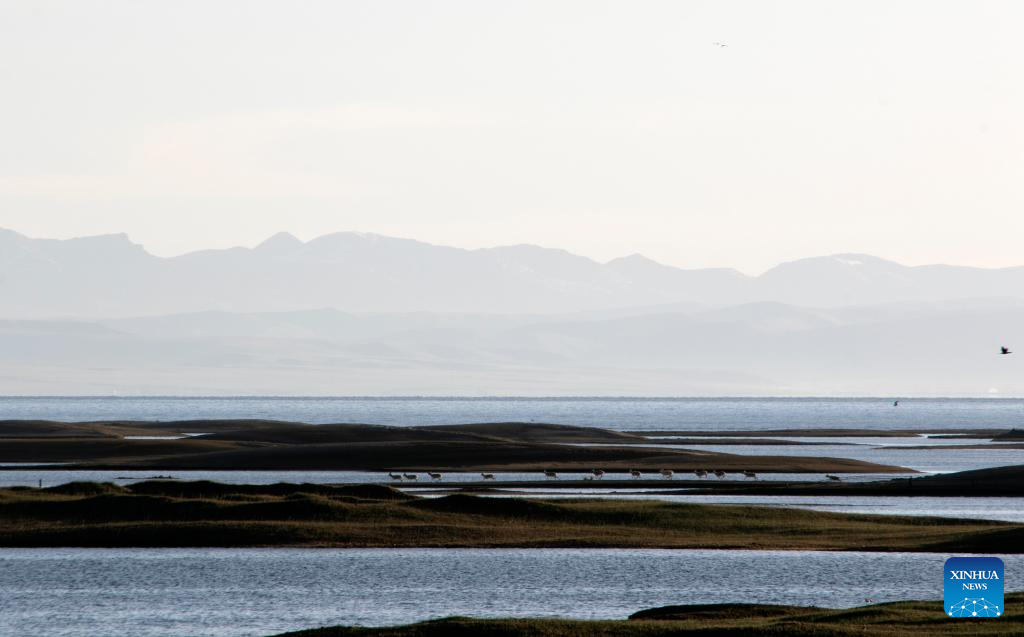
This photo taken on May 17, 2020 shows Przewalski's gazelles at Qinghai Lake, northwest China's Qinghai Province.
Qinghai Lake, located in northwest China's Qinghai Province, is China's largest inland saltwater lake. It is a major transit point for migratory birds from Central Asia to India and East Asia to Australia. It also serves as an important winter home for waterbirds on the Qinghai-Tibet Plateau.
Qinghai Lake is a crucial body of water to maintain ecological security in the northeastern Qinghai-Tibet Plateau. It is also a natural barrier for controlling the eastward spread of desertification. The improving ecosystem of the lake in recent years has benefited a variety of plant and animal species. (Photo by Xing Zhi/Xinhua)

This photo taken on Sept. 14, 2019 shows tourists strolling in cole flower fields along the Qinghai Lake in northwest China's Qinghai Province.
Qinghai Lake, located in northwest China's Qinghai Province, is China's largest inland saltwater lake. It is a major transit point for migratory birds from Central Asia to India and East Asia to Australia. It also serves as an important winter home for waterbirds on the Qinghai-Tibet Plateau.
Qinghai Lake is a crucial body of water to maintain ecological security in the northeastern Qinghai-Tibet Plateau. It is also a natural barrier for controlling the eastward spread of desertification. The improving ecosystem of the lake in recent years has benefited a variety of plant and animal species. (Xinhua/Zhang Long)
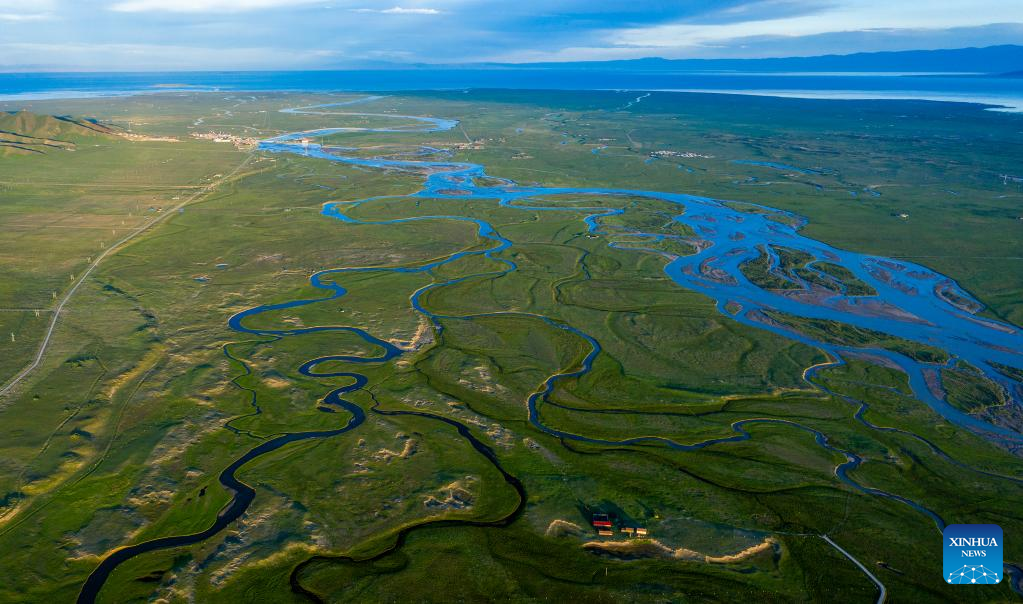
This aerial photo taken on July 19, 2020 shows a view of Buh River wetland at Qinghai Lake in northwest China's Qinghai Province.
Qinghai Lake, located in northwest China's Qinghai Province, is China's largest inland saltwater lake. It is a major transit point for migratory birds from Central Asia to India and East Asia to Australia. It also serves as an important winter home for waterbirds on the Qinghai-Tibet Plateau.
Qinghai Lake is a crucial body of water to maintain ecological security in the northeastern Qinghai-Tibet Plateau. It is also a natural barrier for controlling the eastward spread of desertification. The improving ecosystem of the lake in recent years has benefited a variety of plant and animal species. (Photo by Yang Tao/Xinhua)

This aerial photo taken on April 20, 2020 shows a view of Qinghai Lake at Heimahe Town, Gonghe County of northwest China's Qinghai Province.
Qinghai Lake, located in northwest China's Qinghai Province, is China's largest inland saltwater lake. It is a major transit point for migratory birds from Central Asia to India and East Asia to Australia. It also serves as an important winter home for waterbirds on the Qinghai-Tibet Plateau.
Qinghai Lake is a crucial body of water to maintain ecological security in the northeastern Qinghai-Tibet Plateau. It is also a natural barrier for controlling the eastward spread of desertification. The improving ecosystem of the lake in recent years has benefited a variety of plant and animal species. (Xinhua/Zhang Long)
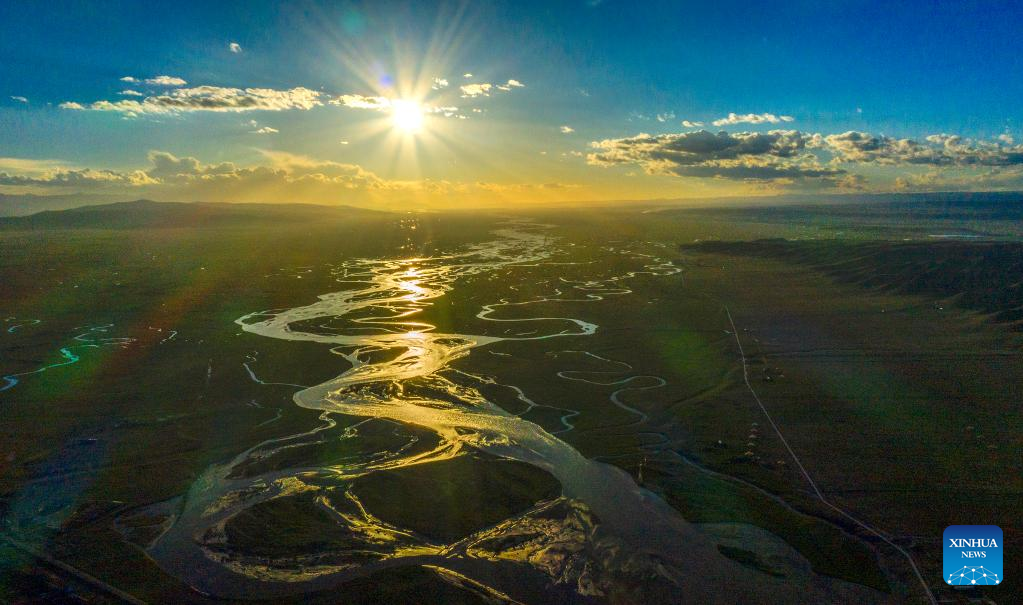
This aerial photo taken on July 18, 2020 shows a view of Buh River wetland at Qinghai Lake in northwest China's Qinghai Province.
Qinghai Lake, located in northwest China's Qinghai Province, is China's largest inland saltwater lake. It is a major transit point for migratory birds from Central Asia to India and East Asia to Australia. It also serves as an important winter home for waterbirds on the Qinghai-Tibet Plateau.
Qinghai Lake is a crucial body of water to maintain ecological security in the northeastern Qinghai-Tibet Plateau. It is also a natural barrier for controlling the eastward spread of desertification. The improving ecosystem of the lake in recent years has benefited a variety of plant and animal species. (Photo by Yang Tao/Xinhua)



